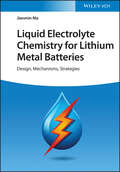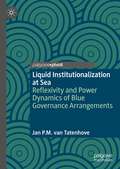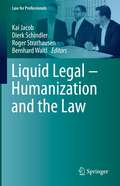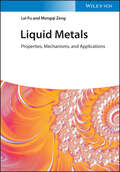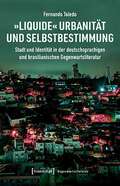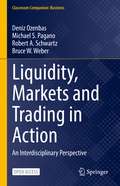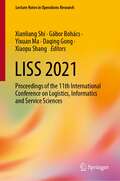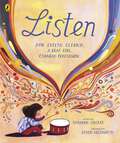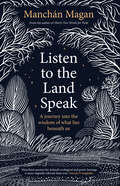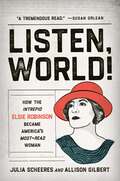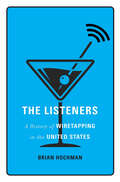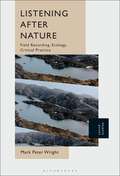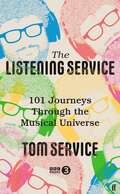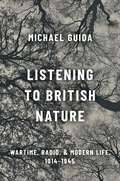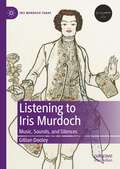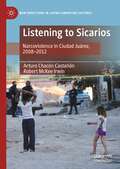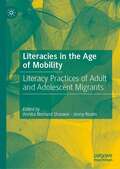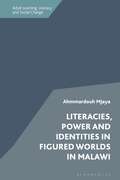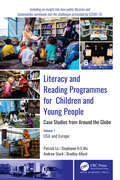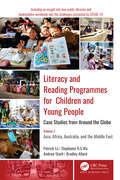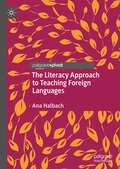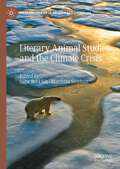- Table View
- List View
Liquid Electrolyte Chemistry for Lithium Metal Batteries: Design, Mechanisms, Strategies
by Jianmin MaLiquid Electrolyte Chemistry for Lithium Metal Batteries An of-the-moment treatment of liquid electrolytes used in lithium metal batteries Considered by many as the most-promising next-generation batteries, lithium metal batteries have grown in popularity due to their low potential and high capacity. Crucial to the development of this technology, electrolytes can provide efficient electrode electrolyte interfaces, assuring the interconversion of chemical and electrical energy. The quality of electrode electrolyte interphase, in turn, directly governs the performance of batteries. In Liquid Electrolyte Chemistry, provides a comprehensive look at the current understanding and status of research regarding liquid electrolytes for lithium metal batteries. Offering an introduction to lithium-based batteries from development history to their working mechanisms, the book further offers a glimpse at modification strategies of anode electrolyte interphases and cathode electrolytic interphases. More, by discussing the high-voltage electrolytes from their solvents—organic solvents and ionic liquids—to electrolyte additives, the text provides a thorough understanding on liquid electrolyte chemistry in the remit of lithium metal batteries. Liquid Electrolyte Chemistry for Lithium Metal Batteries readers will also find: A unique focus that reviews the development of liquid electrolytes for lithium metal batteries State-of-the-art progress and development of electrolytes for lithium metal batteries Consideration of safety, focusing the design principles of flame retardant and non-flammable electrolytes Principles and progress on low temperature and high temperature electrolytes Liquid Electrolyte Chemistry for Lithium Metal Batteries is a useful reference for electrochemists, solid state chemists, inorganic chemists, physical chemists, surface chemists, materials scientists, and the libraries that supply them.
Liquid Legal – Humanization and the Law (Law for Professionals)
by Kai Jacob Dierk Schindler Roger Strathausen Bernhard Waltl“Humanization and the Law” combines two current and complementary trends in the business-to-business (B2B) market of the legal industry: digitalization and humanization. On the one hand, digital transformation in corporate legal departments and law firms continues to advance. Contract management, e-discovery, due diligence, legal operations, and forensic data analysis are just a few examples of task areas where the use of intelligent software solutions minimizes legal risks and increases compliance, enables efficiency gains and cost reductions through automation, and allows faster and more agile responses to changing market demands and client expectations. On the other hand, the increasing number of failed digitalization projects shows that technology alone is not enough to successfully transform legal departments and law firms. Software solutions must be integrated into existing work processes, be easy to use, and provide real benefits in order to be accepted by employees. People and their ability to make decisions and lead others remain the focus in an increasingly digitalized legal industry. More than 20 authors provide insights into why human aspects matter for business, what organizations can do to increase the mental well-being and motivation of their employees, and how to prevail in the upcoming war for talent in the legal industry. “The legal industry has been largely dismissive of “soft skills” and “humanizing law.” One of the paradoxes of our time is that the ascendency of automation, artificial intelligence, blockchain, Big Data, and other technological platforms has elevated, not diminished, the importance of humanity. It is not only what distinguishes us from machines but it also enables us to apply our humanity to machines. The legal function will play an important role in this process but must first take a hard look at itself.” (Mark A. Cohen, in “Foreword”)
Liquid Metals: Properties, Mechanisms, and Applications
by Lei Fu Mengqi ZengAn up-to-date exploration of the properties and most recent applications of liquid metals In Liquid Metal: Properties, Mechanisms, and Applications, a pair of distinguished researchers delivers a comprehensive exploration of liquid metals with a strong focus on their structure and physicochemical properties, preparation methods, and tuning strategies. The book also illustrates the applications of liquid metals in fields as varied as mediated synthesis, 3D printing, flexible electronics, biomedicine, energy storage, and energy conversion. The authors include coverage of reactive mediums for synthesizing and assembling nanomaterials and direct-writing electronics, and the book offers access to supplementary video materials to highlight the concepts discussed within. Recent advancements in the field of liquid metals are also discussed, as are new opportunities for research and development in this rapidly developing area. The book also includes: A thorough introduction to the fundamentals of liquid metal, including a history of its discovery, its structure and physical properties, and its preparation Comprehensive explorations of the external field tuning of liquid metal, including electrical, magnetic, and chemical tuning Practical discussions of liquid metal as a new reaction medium, including nanomaterial synthesis and alloy preparation In-depth examinations of constructing techniques of liquid metal-based architectures, including injection, imprinting, and mask-assisted depositing Perfect for materials scientists, electrochemists, and catalytic chemists, Liquid Metal: Properties, Mechanisms, and Applications also belongs in the libraries of inorganic chemists, electronics engineers, and biochemists.
Liquid Metals: Properties, Mechanisms, and Applications
by Lei Fu Mengqi ZengAn up-to-date exploration of the properties and most recent applications of liquid metals In Liquid Metal: Properties, Mechanisms, and Applications, a pair of distinguished researchers delivers a comprehensive exploration of liquid metals with a strong focus on their structure and physicochemical properties, preparation methods, and tuning strategies. The book also illustrates the applications of liquid metals in fields as varied as mediated synthesis, 3D printing, flexible electronics, biomedicine, energy storage, and energy conversion. The authors include coverage of reactive mediums for synthesizing and assembling nanomaterials and direct-writing electronics, and the book offers access to supplementary video materials to highlight the concepts discussed within. Recent advancements in the field of liquid metals are also discussed, as are new opportunities for research and development in this rapidly developing area. The book also includes: A thorough introduction to the fundamentals of liquid metal, including a history of its discovery, its structure and physical properties, and its preparation Comprehensive explorations of the external field tuning of liquid metal, including electrical, magnetic, and chemical tuning Practical discussions of liquid metal as a new reaction medium, including nanomaterial synthesis and alloy preparation In-depth examinations of constructing techniques of liquid metal-based architectures, including injection, imprinting, and mask-assisted depositing Perfect for materials scientists, electrochemists, and catalytic chemists, Liquid Metal: Properties, Mechanisms, and Applications also belongs in the libraries of inorganic chemists, electronics engineers, and biochemists.
»liquide« Urbanität Und Selbstbestimmung: Stadt Und Identität In Der Deutschsprachigen Und Brasilianischen Gegenwartsliteratur (Gegenwartsliteratur Ser. #17)
by Fernando ToledoLiquidity, Markets and Trading in Action: An Interdisciplinary Perspective (Classroom Companion: Business)
by Robert A. Schwartz Bruce W. Weber Deniz Ozenbas Michael S. PaganoThis open access book addresses four standard business school subjects: microeconomics, macroeconomics, finance and information systems as they relate to trading, liquidity, and market structure. It provides a detailed examination of the impact of trading costs and other impediments of trading that the authors call “frictions”. It also presents an interactive simulation model of equity market trading, TraderEx, that enables students to implement trading decisions in different market scenarios and structures. Addressing these topics shines a bright light on how a real-world financial market operates, and the simulation provides students with an experiential learning opportunity that is informative and fun.Each of the chapters is designed so that it can be used as a stand-alone module in an existing economics, finance, or information science course. Instructor resources such as discussion questions, Powerpoint slides and TraderEx exercises are available online.
LISS 2021: Proceedings of the 11th International Conference on Logistics, Informatics and Service Sciences (Lecture Notes in Operations Research)
by Xianliang Shi Xiaopu Shang Gábor Bohács Daqing Gong Yixuan MaThis book aims to provide new research methods, theories and applications from various areas of management and engineering. In detail, the included scientific papers analyze and describe communication processes in the fields of logistics, informatics, service sciences and other related areas. The variety of the papers delivers added value for both scholars and practitioners. Information and communication technologies have been providing an effective network infrastructure and development platform for logistics and service operations. To meet the needs of consumers and to promote core competences, many institutions and firms have been developing new types of services. This proceeding focus on “AI and data driven technical and management innovation in logistics, informatics and services.” In detail, the included scientific papers analyze the latest fundamental advances in the state of the art and practice of logistics, informatics, service operations and service science. This book is the documentation of the conference “11th International Conference on Logistics, Informatics and Service Sciences,” which took place at the Shandong University. Due to the impact of COVID-19, LISS 2021 took place online as a virtual conference.
Listen: How Evelyn Glennie, a Deaf Girl, Changed Percussion
by Shannon StockerThis inspiring picture book tells the true story of world-famous deaf percussionist Dame Evelyn Glennie.This is a story of music.Of obstacles.Of strength and hard work.Of all you can accomplish when you dream.As a child, Evelyn Glennie's ears began to hurt. Voices became distant whispers. Ringing phones sounded like muffled crunches in her ears. But when she was told that she would need to wear hearing aids for the rest of her life, Evelyn was determined that this this would never stop her from playing music. Instead of giving up on her dreams, Evelyn found new ways to listen...With stunning illustrations from Devon Holzwarth, and a special note from Evelyn Glennie herself, this is the perfect book to inspire children to never give up on their dreams.
Listen to the Land Speak: A Journey into the Wisdom of What Lies Beneath Us
by Manchán MaganOur ancestors lived in a unique and complex society that was inspired by nature and centred upon esteemed poets, seers, monks, healers and wise women, all of whom were deeply connected to the land around them. This relationship to the cycles of the natural world – from which we are increasingly dissociated – was the animating force in their lives.With infectious joy and wonder, Manchán Magan roams through Ireland’s ancient bogs, rivers, mountains and shorelines, tracing our ancestors’ footsteps. He uncovers the myths and lore that have shaped a national identity that is quietly embedded in the land, which has endured ice ages, famine and floods.A magical and reinvigorating exploration into the wisdom that lies beneath us, Listen to the Land Speak casts the world in a new light.
Listen, World!: How the Intrepid Elsie Robinson Became America's Most-Read Woman
by Julia Scheeres Allison Gilbert*Winner of the 2023 Northern California Book Award* The first biography of Elsie Robinson, the most influential newspaper columnist you&’ve never heard of At thirty-five, Elsie Robinson feared she&’d lost it all. Reeling from a scandalous divorce in 1917, she had no means to support herself and her chronically ill son. She dreamed of becoming a writer and was willing to sacrifice everything for this goal, even swinging a pickax in a gold mine to pay the bills. When the mine shut down, she moved to the Bay Area. Armed with moxie and samples of her work, she barged into the offices of the Oakland Tribune and was hired on the spot. She went on to become a nationally syndicated columnist and household name whose column ran for over thirty years and garnered more than twenty million readers. Told in cinematic detail by bestselling author Julia Scheeres and award-winning journalist Allison Gilbert, Listen, World! is the inspiring story of a timeless maverick, capturing what it means to take a gamble on self-fulfillment and find freedom along the way.
The Listeners: A History of Wiretapping in the United States
by Brian HochmanThey’ve been listening for longer than you think. A new history reveals how—and why. Wiretapping is nearly as old as electronic communications. Telegraph operators intercepted enemy messages during the Civil War. Law enforcement agencies were listening to private telephone calls as early as 1895. Communications firms have assisted government eavesdropping programs since the early twentieth century—and they have spied on their own customers too. Such breaches of privacy once provoked outrage, but today most Americans have resigned themselves to constant electronic monitoring. How did we get from there to here? In The Listeners, Brian Hochman shows how the wiretap evolved from a specialized intelligence-gathering tool to a mundane fact of life. He explores the origins of wiretapping in military campaigns and criminal confidence games and tracks the use of telephone taps in the US government’s wars on alcohol, communism, terrorism, and crime. While high-profile eavesdropping scandals fueled public debates about national security, crime control, and the rights and liberties of individuals, wiretapping became a routine surveillance tactic for private businesses and police agencies alike. From wayward lovers to foreign spies, from private detectives to public officials, and from the silver screen to the Supreme Court, The Listeners traces the long and surprising history of wiretapping and electronic eavesdropping in the United States. Along the way, Brian Hochman considers how earlier generations of Americans confronted threats to privacy that now seem more urgent than ever.
Listening After Nature: Field Recording, Ecology, Critical Practice
by Mark Peter WrightListening After Nature examines the constructions and erasures that haunt field recording practice and discourse. Analyzing archival and contemporary soundworks through a combination of post-colonial, ecological and sound studies scholarship, Mark Peter Wright recodes the Field; troubles conceptions of Nature; expands site-specificity; and unearths hidden technocultures. What exists beyond the signal? How is agency performed and negotiated between humans and nonhumans? What exactly is a field recording and what are its pedagogical potentials? These questions are operated by a methodology of listening that incorporates the spaces of audition, as well as Wright's own practice-based reflections. In doing so, Listening After Nature posits a range of novel interventions. One example is the “Noisy-Nonself,” a conceptual figuration with which to comprehend the presence of reticent recordists. “Contact Zones and Elsewhere Fields” offers another unique contribution by reimaging the relationship between the field and studio. In the final chapter, Wright explores the microphone by tracing its critical and creative connections to natural resource extraction and contemporary practice. Listening After Nature auditions water and waste, infrastructures and animals, technologies and recordists, data and stars. It grapples with the thresholds of sensory perception and anchors itself to the question: what am I not hearing? In doing so, it challenges Western universalisms that code the field whilst offering vibrant practice-based possibilities.
The Listening Service: 101 Journeys through the Musical Universe
by Tom ServiceBased on his critically-acclaimed BBC Radio 3 programme The Listening Service, in which Tom Service takes an idea on an ear-opening and mind-expanding walk through the musical landscape every week, this book is a celebration of music's multi-dimensional power in our lives. With 101 short chapters based on the programmes and grouped thematically the book will open ears and imaginations to find answers to the questions we all have about why and how music - from Toots and the Maytals and J S Bach, Gustav Mahler and Miley Cyrus, to Anna Meredith and Mozart - works its magic over us. With direct links to the programmes using a QR code, the chapters draw on powerful and communicative anecdotes and analogies, as well as the latest scientific research, and above all, a spirit of discovery and connection across genres, cultures, and histories. At its heart is the conviction that music changes us.
Listening to British Nature: Wartime, Radio, and Modern Life, 1914-1945
by Michael GuidaListening to British Nature: Wartime, Radio, and Modern Life, 1914-1945 reveals for the first time how the sounds and rhythms of the natural world were listened to, interpreted and used amid the pressures of early twentieth century life. The book argues that despite and sometimes because of the chaos of wartime and the struggle to recover, nature's voices were drawn close to provide security and engender optimism. Nature's sonic presences were not obliterated by machine age noise, the advent of radio broadcasting or the rush of the urban everyday, rather they came to complement and provide alternatives to modern modes of living. This book examines how trench warfare demanded the creation of new listening cultures to understand danger and to imagine survival. It tells of the therapeutic communities who made use of nature's quietude and the rhythms of rural work to restore shell-shocked soldiers, and of ramblers who sought to immerse themselves in the sensualities of the outdoors. It reveals how home-front listening during the Blitz was punctuated by birdsong, broadcast by the BBC. To listen to nature during this period was to cultivate an intimate connection with its energies and to sense an enduring order and beauty that could be taken into the future. Listening to nature was a way of being modern.
Listening to Iris Murdoch: Music, Sounds, and Silences (Iris Murdoch Today)
by Gillian DooleyWhen we think of Iris Murdoch’s relationship with art forms, the visual arts come most readily to mind. However, music and other sounds are equally important. Soundscapes – music and other types of sound – contribute to the richly textured atmosphere and moral tenor of Murdoch’s novels. This book will help readers to appreciate anew the sensuous nature of Iris Murdoch’s prose, and to listen for all kinds of music, sounds and silences in her novels, opening up a new sub-field in Murdoch studies in line with the emerging field of Word and Music Studies. This study is supported by close readings of selected novels exemplifying the subtle variety of ways she deploys music, sounds and silence in her fiction. It also covers Murdoch’s knowledge of music and her allusions to music throughout her work, and includes a survey of musical settings of her words by various composers.
Listening to Sicarios: Narcoviolence in Ciudad Juárez, 2008-2012 (New Directions in Latino American Cultures)
by Arturo Chacón Castañón Robert McKee IrwinListening to Sicarios presents new insights into the lives of paid assassins of Mexico’s drug trafficking syndicates from the perspectives of the assassins themselves. Based on an extraordinary series of ethnographic interviews carried out in the wake of the record levels of narcoviolence experienced in Ciudad Juárez between 2008 and 2012, this study analyzes the ways in which these young men interpret their actions across four key thematic axes: border infrastructures, youth and responsibility, masculinity and sentiment, and ethics: good vs. evil.It argues that sicarios follow a career path within a criminal corporate infrastructure that is especially robust in Mexican border cities. It also explores how sicarios understand youthful innocence in relation to adult accountability in the realm of violence that is frequently meted out by young men on other young men. It then analyzes sicarios’ expressions of feelings of power that may boost their sense of virility, as well as feelings of fear and regret that imply weakness. Finally, it examines how sicarios defend their personal integrity in the face of a public discourse that views their acts as savage.
Literacies in the Age of Mobility: Literacy Practices of Adult and Adolescent Migrants
by Annika Norlund Shaswar Jenny RosénThis book offers insights into questions related to mobility, literacy learning and literacy practices of adult and adolescent migrants. The authors address learning and use of literacies among adults and adolescents in both temporary and more permanent post-migration settlements and in various contexts, exploring spatial as well as temporal dimensions of literacies and power. The formal and informal educational settings examined include state-mandated schools, community settings, and libraries, and the chapters offer insights into the complex relations between literacies and mobility, as well as a range of perspectives on language use and language learning. This volume will be of interest to students and researchers in fields including education and literacy, applied linguistics, language education and migration studies.
Literacies, Power and Identities in Figured Worlds in Malawi (Adult Learning, Literacy and Social Change)
by Ahmmardouh MjayaThis book is based on an in-depth ethnographic study of the National Adult Literacy Programme (NALP) in Malawi. It highlights the significance of exploring power and identity in literacy studies. Employing the concept of 'figured worlds' to study literacy as a social practice, the book focuses on understanding power relationships and identities in literacy practices. It illustrates how literacy identities and power relationships of some local community members continuously vary from one context to another and, in some cases, even within the same context. Using notions such as agency, artefact, resistance, shame and positioning, the book demonstrates the potential of the concept of figured worlds to address some of the questions raised within the New Literacy Studies – especially those concerning power and identity. The book also illustrates the value of an ethnographic approach in adult literacy studies, by exploring the challenges faced by the researcher in gaining access to community members' activities, and the opportunity to experience first-hand what instructors go through in facilitating adult literacy lessons.
Literacy and Reading Programmes for Children and Young People: Volume 1: USA and Europe
by Patrick Lo Stephanie H. Wu Andrew J. Stark Bradley AllardLiteracy and Reading Programmes for Children and Young People: Case Studies from Around the Globe presents interviews with over 40 librarians from around the world who tell of their library programs. The volumes are arranged geographically with Volume 1 offering interviews from library professionals from the USA and Europe, and with Volume 2 sharing programs from Asia, Africa, Australia, and the Middle East. The volumes highlight the diversity of the types of programs catering to the varying needs of children and young adults throughout the world. Case studies featured in this book outline the details of programs, events, and activities provided by over 40 organizations in the context of social capital and social inclusion. Each interview chapter discusses the contributions made to literacy development and community building of children and teens. With the many variations and examples of best practice, librarians and educators can glean new ideas for their own programs. The interviews reveal the challenges and issues faced and the work being achieved in vastly different environments, in many geographic areas, and in diverse economic, social, and cultural contexts. The programs include those of national and state libraries, public libraries, and mobile libraries carried out by public libraries, NGOs, and commercial organizations in both developed and developing countries. They also feature programs of multicultural libraries, libraries for indigenous people, and libraries for refugees. This publication complements the range of initiatives and activities carried out by IFLA’s Libraries for Children and Young Adults Section that supports library services and reading promotion initiatives catering to children and young adults around the world. These volumes are rich in variety and will provide much food for thought for creating unique and successful library programs.
Literacy and Reading Programmes for Children and Young People: Volume 2: Asia, Africa, Australia, and the Middle East
by Andrew J. Stark Bradley Allard Patrick Lo Stephanie H. WuLiteracy and Reading Programmes for Children and Young People: Case Studies from Around the Globe presents interviews with over 40 librarians from around the world who tell of their library programs. The volumes are arranged geographically with Volume 1 offering interviews from library professionals from the USA and Europe, and with Volume 2 sharing programs from Asia, Africa, Australia, and the Middle East. The volumes highlight the diversity of the types of programs catering to the varying needs of children and young adults throughout the world. Case studies featured in this book outline the details of programs, events, and activities provided by over 40 organizations in the context of social capital and social inclusion. Each interview chapter discusses the contributions made to literacy development and community building of children and teens. With the many variations and examples of best practice, librarians and educators can glean new ideas for their own programs. The interviews reveal the challenges and issues faced and the work being achieved in vastly different environments, in many geographic areas, and in diverse economic, social, and cultural contexts. The programs include those of national and state libraries, public libraries, and mobile libraries carried out by public libraries, NGOs, and commercial organizations in both developed and developing countries. They also feature programs of multicultural libraries, libraries for indigenous people, and libraries for refugees. This publication complements the range of initiatives and activities carried out by IFLA’s Libraries for Children and Young Adults Section that supports library services and reading promotion initiatives catering to children and young adults around the world. These volumes are rich in variety and will provide much food for thought for creating unique and successful library programs.
Literacy and Reading Programmes for Children and Young People: Volume 1: USA and Europe
by Patrick Lo Stephanie H. Wu Andrew J. Stark Bradley AllardLiteracy and Reading Programmes for Children and Young People: Case Studies from Around the Globe presents interviews with over 40 librarians from around the world who tell of their library programs. The volumes are arranged geographically with Volume 1 offering interviews from library professionals from the USA and Europe, and with Volume 2 sharing programs from Asia, Africa, Australia, and the Middle East. The volumes highlight the diversity of the types of programs catering to the varying needs of children and young adults throughout the world. Case studies featured in this book outline the details of programs, events, and activities provided by over 40 organizations in the context of social capital and social inclusion. Each interview chapter discusses the contributions made to literacy development and community building of children and teens. With the many variations and examples of best practice, librarians and educators can glean new ideas for their own programs. The interviews reveal the challenges and issues faced and the work being achieved in vastly different environments, in many geographic areas, and in diverse economic, social, and cultural contexts. The programs include those of national and state libraries, public libraries, and mobile libraries carried out by public libraries, NGOs, and commercial organizations in both developed and developing countries. They also feature programs of multicultural libraries, libraries for indigenous people, and libraries for refugees. This publication complements the range of initiatives and activities carried out by IFLA’s Libraries for Children and Young Adults Section that supports library services and reading promotion initiatives catering to children and young adults around the world. These volumes are rich in variety and will provide much food for thought for creating unique and successful library programs.
Literacy and Reading Programmes for Children and Young People: Volume 2: Asia, Africa, Australia, and the Middle East
by Patrick Lo Stephanie H. Wu Andrew J. Stark Bradley AllardLiteracy and Reading Programmes for Children and Young People: Case Studies from Around the Globe presents interviews with over 40 librarians from around the world who tell of their library programs. The volumes are arranged geographically with Volume 1 offering interviews from library professionals from the USA and Europe, and with Volume 2 sharing programs from Asia, Africa, Australia, and the Middle East. The volumes highlight the diversity of the types of programs catering to the varying needs of children and young adults throughout the world. Case studies featured in this book outline the details of programs, events, and activities provided by over 40 organizations in the context of social capital and social inclusion. Each interview chapter discusses the contributions made to literacy development and community building of children and teens. With the many variations and examples of best practice, librarians and educators can glean new ideas for their own programs. The interviews reveal the challenges and issues faced and the work being achieved in vastly different environments, in many geographic areas, and in diverse economic, social, and cultural contexts. The programs include those of national and state libraries, public libraries, and mobile libraries carried out by public libraries, NGOs, and commercial organizations in both developed and developing countries. They also feature programs of multicultural libraries, libraries for indigenous people, and libraries for refugees. This publication complements the range of initiatives and activities carried out by IFLA’s Libraries for Children and Young Adults Section that supports library services and reading promotion initiatives catering to children and young adults around the world. These volumes are rich in variety and will provide much food for thought for creating unique and successful library programs.
The Literacy Approach to Teaching Foreign Languages
by Ana HalbachThis book describes a new approach to teaching foreign languages for primary and secondary school that shifts the attention from learning the language to communicate skillfully in the foreign language. The approach focuses on developing students’ literacy skills as a way to discover language and make it meaningful. In the first four chapters the rationale for the approach is explained and illustrated with examples from different units of work in different languages (French, English and Spanish). Chapter 5 talks the reader through a complete unit of work based on a YouTube video, while chapter 6 looks at how this approach can be integrated into an existing curriculum. The book ends by looking at teachers and their difficulties in implementing this approach, and finally sets the Literacy Approach against recent developments in education. This volume will be of interest to academics, students and teachers in fields including foreign language education, literacy development, and CLIL.
Literary Animal Studies and the Climate Crisis (Palgrave Studies in Animals and Literature)
by Sune Borkfelt Matthias StephanLiterary Animal Studies and the Climate Crisis connects insights from the field of literary animal studies with the urgent issues of climate change and environmental degradation, and features considerations of new interventions by literature in relation to these pressing questions and debates. This volume informs academic debates in terms of how nonhuman animals figure in our cultural imagination of topics such as climate change, extinction, animal otherness, the posthuman, and environmental crises. Using a diverse set of methodologies, each chapter presents relevant cases which discuss the various aspects of these interstices. This volume is an intersection between literary animal studies and climate fiction intended as an interdisciplinary intervention that speaks to the global climate debate and is thus relevant across the environmental humanities.
